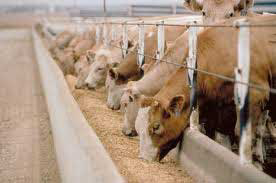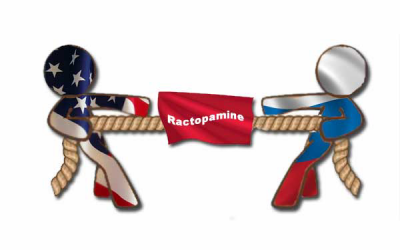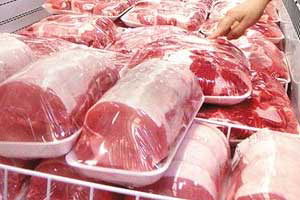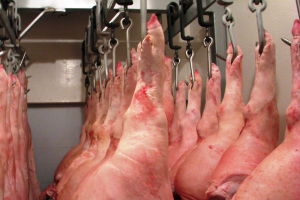Ractopamine: Probably the best-known feed additive
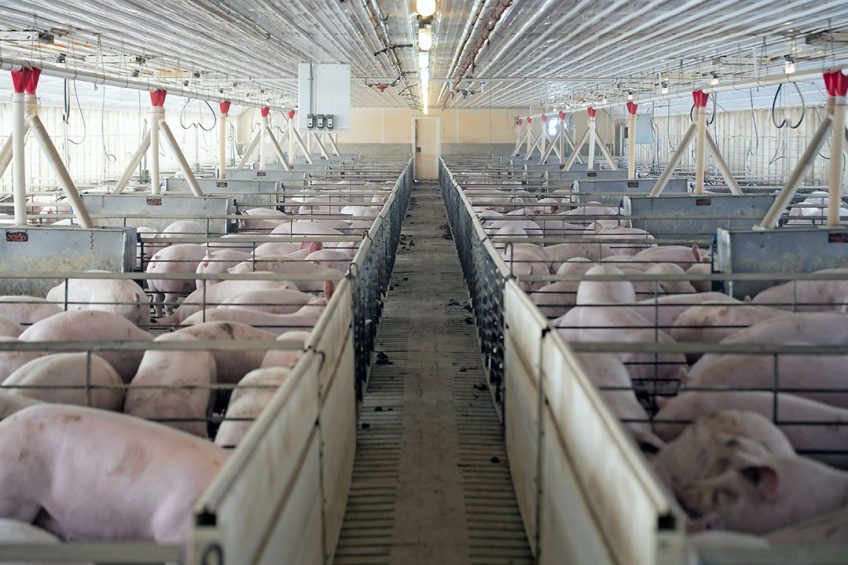
The feed additive ractopamine hydrochloride (RAC) is well known across the globe, but not because it is applied everywhere. In many countries its use is banned, and that’s not likely to change anytime soon. Here’s a closer look at the history and current use for this substance, along with research into possible alternatives.
Dr Dave Thompson of the Michigan State University Extension/Pork Working Group in Michigan, USA, notes that “when used as directed, RAC safely and reliably improves average daily gain and feed efficiency by 10–12%, while improving lean to fat ratio. It gives producers a chance to make a $ 9 return on a $ 3 investment, in less than a month.”
In addition, Dr Thompson notes that the growth rate and efficiency advantages provided by RAC translate to reductions in labour and the carbon footprint of swine production. “None of the competing swine performance products that I’m aware of,” he says, “can check that many boxes.”
Non-ambulatory pigs
However, as outlined in a paper published a few years ago in Translational Animal Science, while RAC was approved in 1999 at doses of 5–20mg/kg to improve feed efficiency and carcass leanness, “anecdotal reports suggested that RAC increased the rate of non-ambulatory (fatigued and injured) pigs at US packing plants. This led to the addition of a caution statement to the ‘Paylean’ label, and a series of research studies.”
Among other findings of further research, RAC was found to increase pig heart rate, cause tremors and, with aggressive handling, cause increased stress response at higher doses.
In 2006, the accepted dosage range was changed in the US to 5–10mg/kg in market-weight pigs. Meanwhile, research continued. Some studies verified earlier results, while others demonstrated minimal effects on mortality, lameness and home pen behaviour at various dose levels.
Meat safety
Concerns related to animal welfare were also coupled with concerns over the safety of meat containing RAC (it is given to beef cattle and turkey as well as to pigs in some parts of the world). In 2012, the international standards agency Codex Alimentarius determined a safe maximum residue level (MRL) for human consumption, but the European Food Safety Authority (EFSA) found in 2009 that there was insufficient data to pinpoint this and has not changed its position since. For its part, the US Food & Drug Administration (FDA) has ruled in RAC’s favour.
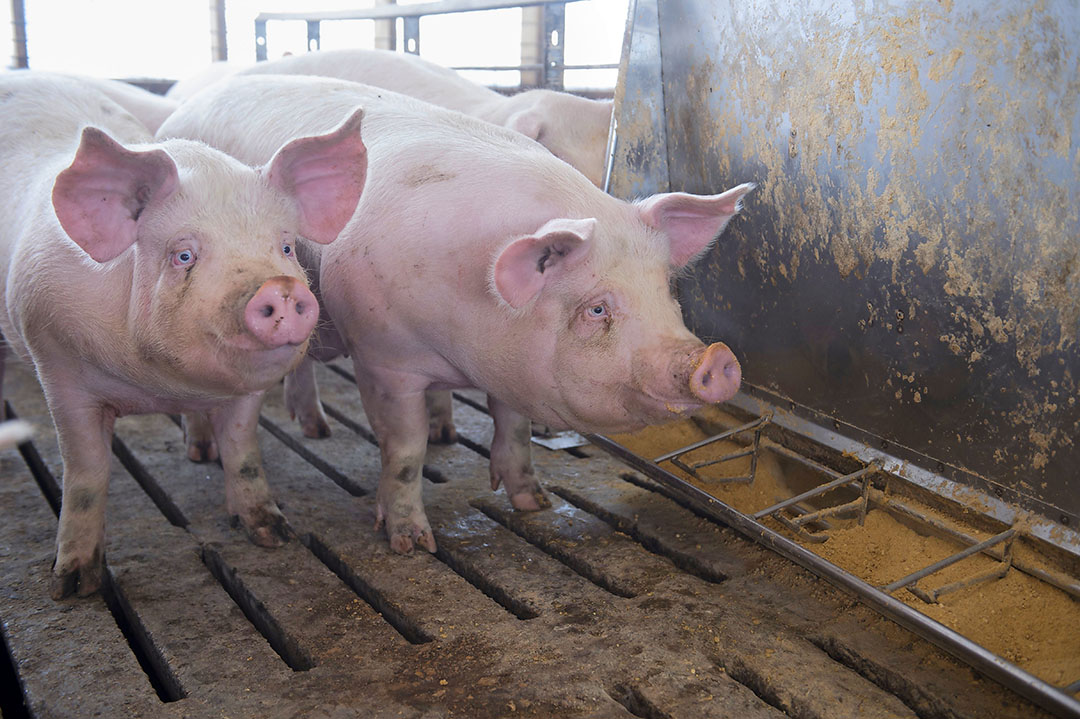
As explained by Thompson and his colleagues in a recent article, “In controlled safety and efficacy studies involving thousands of pigs, and a 20-year track record of safe use in hundreds of millions of finishing pigs, RAC has been shown to be a safe and effective feed supplement when administered at 5–10 ppm (4.5–9g/tonne feed) during the last 21–28 days, corresponding to the last 45–90 pounds [20–40 kg, ed.] of weight gain at finishing.”
And, if RAC is fed in this manner, its MRL at slaughter will fall below the FDA MRLs for RAC of 15 ppb for meat and 50 ppb for liver. “The reason for this is that RAC is rapidly metabolised to inactive molecules,” Thompson and his colleagues explain, allowing “a zero-day withdrawal period in pigs, so producers can use the product safely right up to load-out.”
In organ tissues, however, including liver, kidney and eyes, RAC accumulates to much higher levels and persists for a longer time. And while these parts of the pig are not typically eaten in North America, some of them are consumed in countries such as China.
Ractopamine ban in 160 countries
As of 2014, the use of RAC was banned in 160 countries, including mainland China, Russia and those in the European Union (EU). Thompson and his colleagues note that the zero-tolerance policy for RAC in China and the EU is also influenced by consumer safety events several years ago caused by improper use of clenbuterol, a molecule in the same biochemical class (beta-agonists) as RAC. There were also concerns about “protecting their domestic pork industries from competition.”
By banning imported pork from pigs ever fed RAC, no matter the amount fed or residue level in the meat, countries like China have also indirectly banned RAC use in pork-exporting countries, such as Canada and the US. (However, according to the National Pork Producers Council [NPPC] in the US, RAC is currently approved for use in nearly 30 nations, including Canada, and imports of pork from RAC-fed pigs are currently accepted by 75 countries.)
For its part, while Canada has not banned RAC, its use in that country is non-existent. The Canadian Pork Council states that although RAC “poses no danger to human health”, because Canada is “the world’s third largest exporter of pork… Canada’s federally-inspected processing plants, which produce 97% of Canadian pork… require hogs that are RAC-free”.
In addition, the Canadian Food Inspection Agency has a programme in which all Canadian pork exports are certified as originating from pigs never fed RAC. This initiative, the Canadian Ractopamine-Free Pork Certification Program, involves self-certification and random testing.
Stop feeding ractopamine
In a similar move to protect export profitability, the major pork companies in the US have chosen to stop feeding RAC to pigs whose meat is bound for export. Way back in 2013, Smithfield Foods began phasing out RAC, and during the last two years others followed suit – JBS USA in October 2019 and Tyson Foods and Hormel Foods in early 2020.
Taiwan had restricted the import of RAC pork but in August 2020, US trade officials successfully lobbied to have the restriction eased. In September, Taiwan’s main opposition party began efforts to initiate a referendum opposing the government’s decision to lift the ban and, in November, it got contentious. Opposition party members dumped pig organs on the floor of parliament during a trade discussion, making international headlines.
In the US, RAC had also been given to animals before they were taken to annual fair exhibitions, to build up and accentuate their musculature. In 2020, however, the Ohio State Fair (one of the largest in the US) stated that, “because RAC has been banned in international markets, swine exhibited at the 2020 Ohio State Fair are required to be RAC-free.” Other fairs have followed suit.
Residue levels
While RAC seems to be impossible to use for export markets, some may wonder if producers who wish to gain the benefits of feeding RAC could stop feeding it to their pigs at a certain point and achieve negative MRL test results (0.25 or less ppb RAC in meat), making it possible to export the meat to markets that allow only RAC-free pork.
That is not possible, according to Iowa State University veterinarians Dr Locke Karriker and Dr Chris Rademacher. They note in a recent RAC factsheet that “Unfortunately, there is not a study that directly measures this [but] at a minimum, RAC can be detected for 42 days after the end of feeding… so, it is likely that most or all benefit of feeding RAC would be lost by the time that the pig tested negative.”
Other options
Are there other feed ingredients that result in lean mass increase in the way RAC does? Yes, perhaps at least 2.
Because safflower oil in animal diets has resulted in increased lean mass and decreased body fat, scientists at the University Federal do Rio Grande do Norte in Brazil recently compared it in pig diets to RAC. (They also included coconut oil, which has a similar fatty acid profile to safflower oil.) In the results published in April 2020, the scientists found that all three additives in finishing pig diets had a “significant effect on weight gain and feed conversion” and that both oils “can be used as substitutes for RAC”.
However, Thompson notes that while these results are “interesting”, the trials “were grossly under-powered to draw any conclusions regarding the impacts of these agents on any key performance indicator used in pork production. Had they used six pens with 12 animals per pen, instead of one animal, they might have had an adequate study.”
None of the NPPC, National Pork Board or animal health companies Elanco (the firm that makes Paylean) or Zoetis had comments about alternatives to RAC.
Other uses for RAC
Although RAC can be perceived as unhealthy for humans and pigs, it may have potential to improve human health. However, further investigation may be difficult. In December 2020, Dr Frank Fan, a researcher, doctor and superintendent at Taitung Hospital in Taiwan, published a paper in which he hypothesises, based on lab experiments and epidemiological studies, that consuming meat containing RAC residue could be a viable way to lower the incidence of Parkinson’s disease. In his paper, Fan explains that Parkinson’s is “estimated to be the fastest-growing neurodegenerative disease in the world”, and notes that after South Korea lifted the ban on US beef imports containing RAC residues in 2008, the incidence of Parkinson’s disease decreased in that country “significantly” 4 to 7 years afterwards.
When asked if, theoretically, a very low dose of RAC alone might be used in a clinical trial instead of meat with RAC residues, Dr Fan says he doesn’t think such a trial would be approved. One reason for this is RAC’s “potential adverse effects on the cardiovascular system, especially for elderly people”.
In addition, Dr Fan says that “although it has been concluded that RAC has no carcinogenic and genotoxic effects on animals or human beings”, he has outlined in another new paper that “RAC might bring negative influence on patients who already have cancer cells in their bodies”. He says, ”Accordingly, I would not support an RAC trial for prevention of Parkinson’s disease.”
Extent of use, now and in future
Numbers related to the use of RAC are not easy to come by. It is still used in many countries but the extent of use and whether use is decreasing is not clear in terms of numbers of pigs.
Right now in the US, consumers can buy either RAC pork or RAC-free pork (which has its own US Department of Agriculture label). As Jaydee Hanson, policy director at the Center for Food Safety in the US, explains, RAC-free pork can be more expensive but not necessarily; a large specialty grocery chain called Whole Foods offers them at the same price. As to whether RAC meat is safe, Hanson says that “out of an abundance of caution”, he would not recommend that anyone with a heart problem consume it.
Looking forward, Hanson expects that the US pork industry as a whole will keep pushing for continued use of RAC as it allows for cheaper lean pork production, and that this feed additive will continue to be a topic of conversation, at least in the US. However, Hanson suggests that because the biggest pork-producing companies in the US are not using much RAC, usage may decrease. When asked for the NPPC perspective on current and future extent of RAC use, communications director Rachel Gantz explains that “although RAC use by US hog farmers is not widespread, it is an option that is safe and acceptable. NPPC will continue to defend the right of US hog farmers to use production processes and products that are safe. NPPC opposes government mandates that, with no scientific backing, dictate production practices, unnecessarily increase food prices and inhibit consumer choice.”




